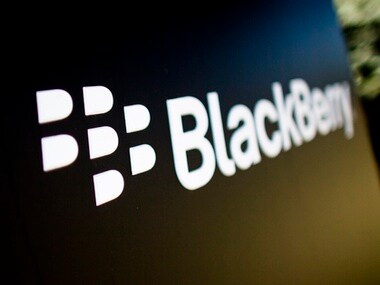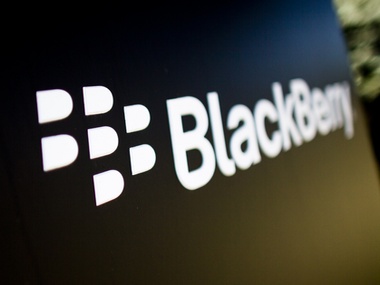Blackberry 10 hasn’t set off cash registers ringing in the consumer space because of perceived notions and inertia on behalf of the customers to switch devices based on the lack of app ecosystem. John Chen, the current BlackBerry CEO, understands this precarious situation and that’s why the focus is back on enterprise, where Blackberry is entrenched in its niche. It must be remembered that BlackBerry was an enterprise company before it became big in the consumer space too. And in order to put the company back on the road to profitability and resurgence, Chen is making inorganic acquisitions, one of them in recent past in NantHealth.
As a medical professional, I believe this is an acquisition made with tremendous foresight. To understand the acquisition in perspective, one needs to understand why Blackberry 10, based on QNX, is the ideal way out. A real time operating system is able to process multiple application requests by processing data as it comes in, with the level of consistency that concerns the amount of time that it takes to complete an application’s task. This comes with the guarantee of the software’s delivery of execution dedicated to a narrow set of applications. The minimal interrupt latency and several other algorithms that work in tandem by resource sharing characterize it. QNX is based on the microkernel operating system that has seen its deployment in mission-critical industries and scenarios- ranging from Air Traffic Control to nuclear power plant systems to car infotainment systems to critical medical technology like angiography and cardiac monitors, linear accelerators for cancer treatment and ECG machines, to name a few.
[caption id=“attachment_77558” align=“alignleft” width=“380”]
 Image: Reuters[/caption]
The present range of medical equipment is easily hackable–devices ranging from infusion pumps for administration of life saving drugs that can be overridden to deliver false dosages without leaving logs, defibrillators that are operated by insecure Bluetooth stacks delivering more than intended shocks, costly X-Ray equipment that can be left switched on intermittently to deliver low dose radiation and the worst, digital electronic medical records that can be easily manipulated to target individual patients. These devices can be programmed to wipe out logs by themselves in order to remove traces of fraudulent activity.
They are also marked by weak administrator passwords connected to internal networks vulnerable to determined hackers without any software firewalls.
Today’s medical devices are also powered by disparate operating systems and technologies that have not seen any incremental improvement in the past few decades and are definitely not coded for the present day threats. Although most devices are governed by FDA Rules, these are arcane and archaic without clarity on how they need to evolve to regulate and securely patch the systems. Once you determine the sheer numbers and disparate devices, the enormity and complexity of the task sinks in.
There is a huge amount of data that is generated in the clinical, operational and financial environment which brings forth its own inter-related issues of cost and quality of health care delivery at various levels.
Various stake holders seek to define optimal patient outcomes based on prevailing standards of care, often in the absence of universally agreed cost models.
NantHealth acts as a middleware integrator through its Clinical Operating System that seeks to draw data from disparate sources like labs, patient accounting system, medical devices, wearable sensors and electronic patient health records. Add genomic data to the mix and you can integrate this deluge of information to be processed through clusters of supercomputers that gives a potent 360-degree view of patient management.
To put things in perspective, assume a cancer patient walks in to a networked hospital that has been able to leverage these emerging technologies. From registration to the doctor’s consultation, followed by lab investigations and imaging solutions, all needs to be easily managed from a central console with modules adapted to various departments. This coupled with the patient’s genomic
information–the basic blocks of DNA and the way genes have collaborated with the molecular outcomes of the cancer–are a powerful tool in the emerging field of molecular diagnosis of the disease. This molecular information needs to be crosschecked in real-time with the emergent published data on the best way to move forward.
This is the holy grail of personalised medicine, based on the best evidence, because no one has been able to come across with a working solution. It takes immense resources to combine these heterogeneous solutions making it very difficult, if not impossible.
How does the Blackberry acquisition help? John Chen has been making the right moves about moving towards a pure-play enterprise solution that has been traditional strength of BlackBerry. This has been the only mobile operating system in the world to have the stringent FIPS Certification making it the default choice of standard enterprise mobility. As mentioned above, the insecurity of networked medical devices is a ticking time bomb. Although there is no proof of concept that any one has been insane enough to hack a hospital’s system, it is not beyond the realm of possibility and it is an eminently scary one.
Therefore, an overarching security solution needs to be developed on an urgent basis and there is some noise in regulatory circles that the gorilla is stirring up from its slumber after becoming aware of these threats. Blackberry can easily extend its expertise in state-of-the-art encryption and secure protocols in order to ward off such threats. This is John Chen’s brilliant move to step up its game in a niche and highly regulated area that has huge potential for growth in the near future–though its exact contours need to be defined.
There are also persistent rumours about having a definitive mobile device from BlackBerry tailored to the medical community–but the exact production values are not known, as it is likely to be in the concept stage. This device is supposed to make medical images better viewable offline or online, making medical professionals more productive.
It’s easy to see Blackberry in the centre of action as it happens. Real-time QNX that leverages the raw processing power of quad core processors, an operating system with its unique layered gestural interface and unparalleled security–you have a potent mix to build a sell-out device for the medical sector that values such an alternative in existence. This is exactly what Blackberry needs to leverage its strength in a domain that naturally belongs to it.
Dr Abhishek Puri is a cancer specialist based in Singapore who keenly follows technology.


)
)
)
)
)
)
)
)
)



